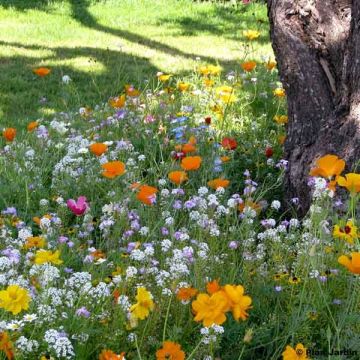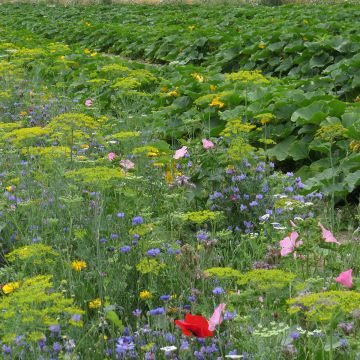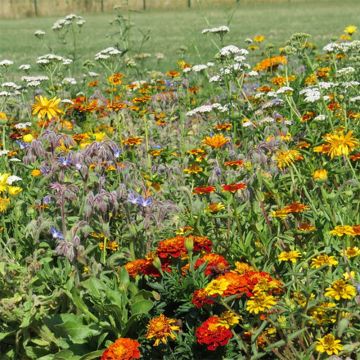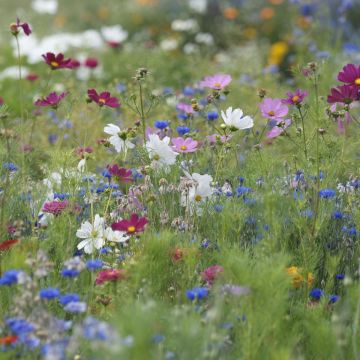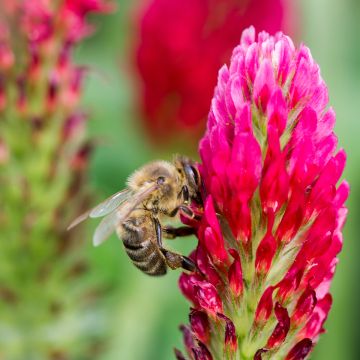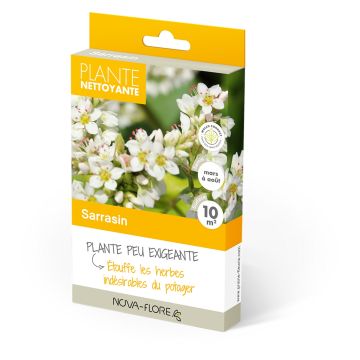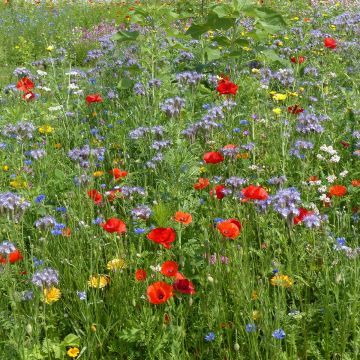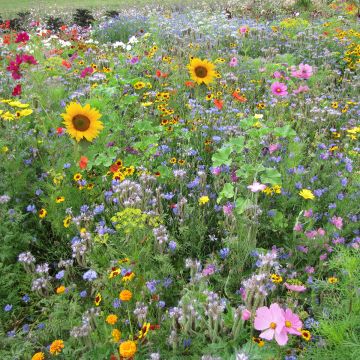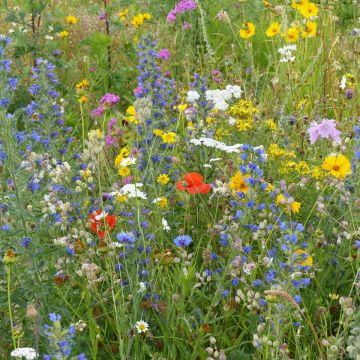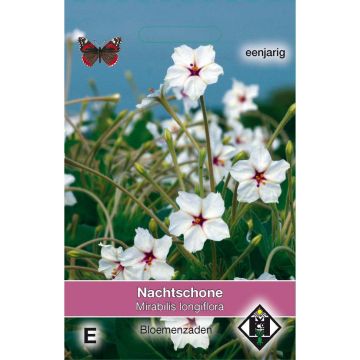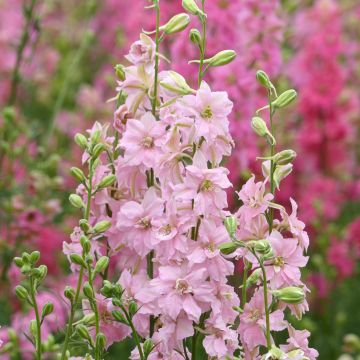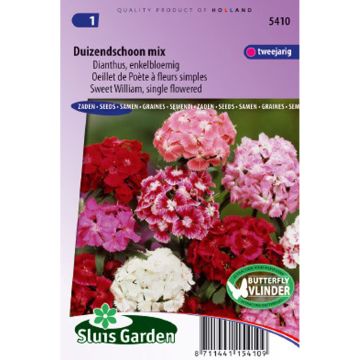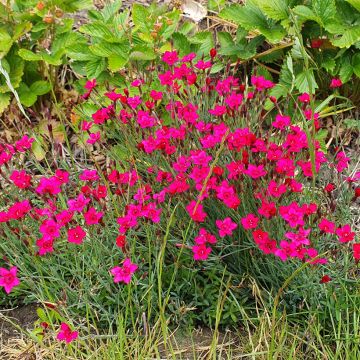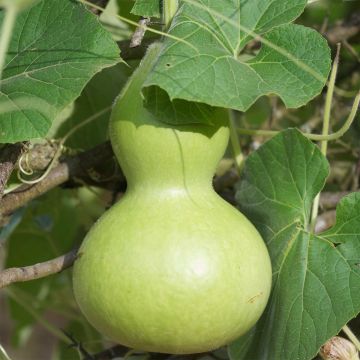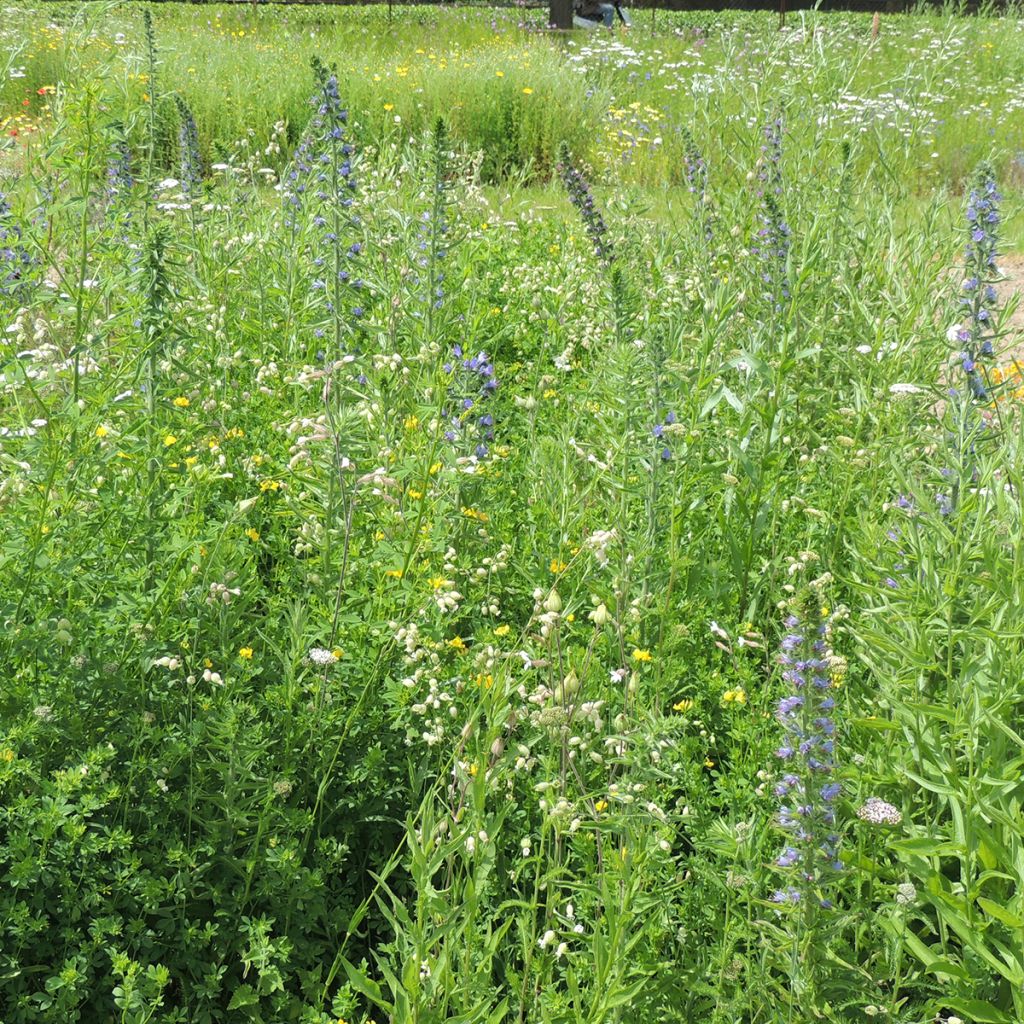

Wildflower Mix for Butterflies
Wildflower Mix for Butterflies
This item cannot be shipped to the selected country
Dispatch by letter from €3.90
More information
Dispatch by letter from €3.90
More information
Schedule delivery date,
and select date in basket
This plant carries a 6 months recovery warranty
More information
We guarantee the quality of our plants for a full growing cycle, and will replace at our expense any plant that fails to recover under normal climatic and planting conditions.
Seed-only orders are dispatched by sealed envelope. The delivery charge for seed-only orders is €3.90.
Does this plant fit my garden?
Set up your Plantfit profile →
Description
A rich assortment of wild perennials and annuals, chosen for their particularly nectar-rich blooms or for their foliage that hosts and feeds the eggs, caterpillars, and chrysalises of several species of butterflies. They are sown directly in place in autumn or spring, in full sun or partial shade. They like well-loosened and prepared soil. The resulting meadow will bloom for several years, from spring to autumn, providing a true refuge for biodiversity.
This selection consists of 21 species of perennials and 4 species of annual or naturalised plants that are hardy and easy to grow in most of our regions. Annuals such as borage bloom 6 to 8 weeks after sowing, while perennials will produce their first flowers from the second year onwards. Autumn sowing produces flowers the following spring. Some, especially annuals, are easily naturalised by spontaneous seedlings, in ordinary, well-draining soil. The size of the plants varies between 80cm (31in) and 1m (3ft) in height.
The mix includes: blueberry, catnip, fennel, echium (viper), teaser, yarrow, Lythrum salicaria (loosestrife), trefoil, foxglove, swollen campion, Lychnis flos-cuculi (meadow carnation).
Our advice: this mixture will attract more butterflies if it is planted in the shelter of a varied hedge or a wall covered with climbers that will protect them from the wind.
The flower meadow blooms throughout summer, promotes biodiversity, and grows almost without care. It just needs watering if the weather is very dry. Mow 10 to 20cm (4 to 8in) from the ground in autumn. Ideal for bringing colour and life to sunny gardens, butterfly lovers will particularly appreciate this mix. It will also attract bees to fruit trees or the vegetable garden, encouraging pollination and fruit production.
Flowering
Foliage
Plant habit
Botanical data
Cultivar or hybrid
Other Fallows and meadows in flower
Planting and care
Sow from August to November or March to the end of May.
Turn over the soil. Refine, rake, and level the ground, and remove pebbles and weeds. Mix the contents of the packet with an equivalent volume of dry sand to obtain a better distribution of the seeds. Broadcast on the surface. Roll or pack the soil to bring the seeds into contact with the soil. Water and keep moist until emergence.
Sow about 2.5g per m².
At the end of flowering (end of September or beginning of October), mow 10cm (4in) from the ground. Leave the clippings on the ground to encourage new seedlings to develop.
Sowing period
Intended location
This item has not been reviewed yet - be the first to leave a review about it.
Flower seeds
Haven't found what you were looking for?
Hardiness is the lowest winter temperature a plant can endure without suffering serious damage or even dying. However, hardiness is affected by location (a sheltered area, such as a patio), protection (winter cover) and soil type (hardiness is improved by well-drained soil).

Photo Sharing Terms & Conditions
In order to encourage gardeners to interact and share their experiences, Promesse de fleurs offers various media enabling content to be uploaded onto its Site - in particular via the ‘Photo sharing’ module.
The User agrees to refrain from:
- Posting any content that is illegal, prejudicial, insulting, racist, inciteful to hatred, revisionist, contrary to public decency, that infringes on privacy or on the privacy rights of third parties, in particular the publicity rights of persons and goods, intellectual property rights, or the right to privacy.
- Submitting content on behalf of a third party;
- Impersonate the identity of a third party and/or publish any personal information about a third party;
In general, the User undertakes to refrain from any unethical behaviour.
All Content (in particular text, comments, files, images, photos, videos, creative works, etc.), which may be subject to property or intellectual property rights, image or other private rights, shall remain the property of the User, subject to the limited rights granted by the terms of the licence granted by Promesse de fleurs as stated below. Users are at liberty to publish or not to publish such Content on the Site, notably via the ‘Photo Sharing’ facility, and accept that this Content shall be made public and freely accessible, notably on the Internet.
Users further acknowledge, undertake to have ,and guarantee that they hold all necessary rights and permissions to publish such material on the Site, in particular with regard to the legislation in force pertaining to any privacy, property, intellectual property, image, or contractual rights, or rights of any other nature. By publishing such Content on the Site, Users acknowledge accepting full liability as publishers of the Content within the meaning of the law, and grant Promesse de fleurs, free of charge, an inclusive, worldwide licence for the said Content for the entire duration of its publication, including all reproduction, representation, up/downloading, displaying, performing, transmission, and storage rights.
Users also grant permission for their name to be linked to the Content and accept that this link may not always be made available.
By engaging in posting material, Users consent to their Content becoming automatically accessible on the Internet, in particular on other sites and/or blogs and/or web pages of the Promesse de fleurs site, including in particular social pages and the Promesse de fleurs catalogue.
Users may secure the removal of entrusted content free of charge by issuing a simple request via our contact form.

































